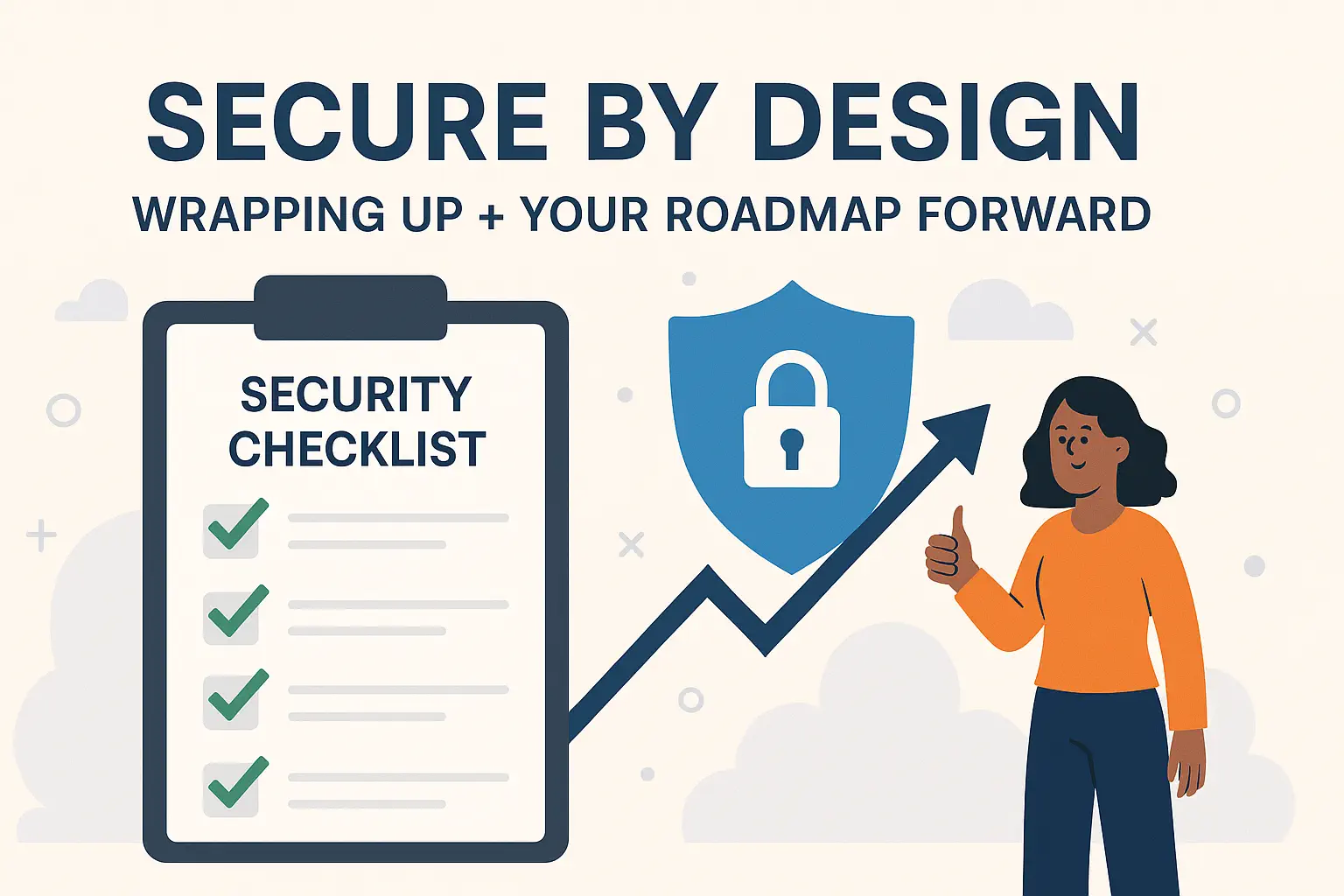The "Secure By Design" series has taken you through a layered journey of securing modern software—from APIs and authentication to session management and browser-level defenses. This final post ties it all together and shows you how to move forward with maturity, automation, and a DevSecOps mindset.
📚 Recap: The 7 Layers of Secure Software
- 1. Why Security Matters – Real-world breaches and the cost of developer neglect
- 2. OWASP Top 10 – Common threats and practical ASP.NET Core fixes
- 3. Secure Authentication – OAuth2, OpenID, and JWT implementation best practices
- 4. Secure APIs – Defense at the boundary layer using rate limits, validation, and auth layers
- 5. Secure Session Management – Managing identity lifecycles safely across platforms
- 6. Threat Modeling – Identifying and addressing risks before you write code
- 7. Security Headers – Hardening browsers against common exploits silently
🧭 The Secure Software Maturity Model
Use this simplified checklist to assess how mature your organization or team is when it comes to building secure systems.
| Layer | Initial | Growing | Mature |
|---|---|---|---|
| Authentication | Basic login form | Token-based (JWT, OAuth2) | Centralized IAM with rotation, audit |
| API Protection | Open endpoints | Token required, input validated | Rate limits, abuse detection, schema validation |
| Threat Modeling | Not done | Done occasionally in major releases | Integrated into agile & CI/CD |
| Security Headers | Missing or defaults | Manually added | Policy-as-code enforced |
| Logging & Monitoring | No central logging | Basic logs, manual review | Alerts + auto-analysis + SIEM integration |
🚀 What Comes Next?
🔁 Shift Left with DevSecOps
Embed security into every stage of your SDLC. Use static analysis tools, secure coding checklists, and enforce secrets scanning during PRs.
⚙️ Automate Security Testing
- Static Analysis: SonarQube, Semgrep, Resharper
- Dependency Scanning: OWASP Dependency-Check, Snyk
- DAST & API Scanners: ZAP, Postman Security
🔍 Continuous Threat Modeling
Use tools like Threat Dragon, IriusRisk or Microsoft TMT. Make threat modeling part of your design sprints.
✅ Commit to Continuous Improvement
Security is not a one-time effort—it's a mindset. Keep up-to-date with OWASP, conduct regular internal audits, and evolve your practices as new threats emerge.
Remember: A secure system is not the one without threats—it's the one where threats are known, mitigated, and monitored.
🎯 Final Thoughts
We hope this series has helped you see security not as a blocker, but as an enabler of safe, reliable, and trustworthy software. As you scale and evolve, let “Secure By Design” be your north star.
Thank you for following the series. Stay safe. Code secure. 🚀

